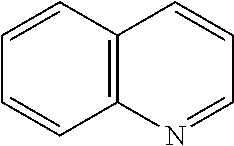Compositions and methods for protecting sensory hair cells
a technology of sensory hair cells and compositions, applied in the direction of drug compositions, biocide, heterocyclic compound active ingredients, etc., to achieve the effect of not altering the ability of cisplatin, not diminishing the antibiotic efficacy of ototoxic aminoglycoside, and altering growth inhibition
- Summary
- Abstract
- Description
- Claims
- Application Information
AI Technical Summary
Benefits of technology
Problems solved by technology
Method used
Image
Examples
example 1
Screening for Protective FDA-Approved Drugs
[0064]Animal care. Wildtype Larval zebrafish (Danio rerio) were produced via group matings of adult fish. Larvae were housed at 28.5 C and maintained at a density of 50 fish per 10 cm diameter petri dish in embryo media (994 μM MgSO4, 150 μM KH2PO4, 42 μM Na2HPO4, 986 μM CaCl2, 503 μM KCl, 14.9 mM NaCl, and 714 μM NaHCO3, with the pH adjusted to 7.2.). Beginning at 4 days post-fertilization (dpf), fish were fed live paramecia or rotifers daily. Experiments were performed using 5 or 6 dpf larvae. The University of Washington Animal Care and Use Committee approved of the animal procedures described here.
[0065]Drug Library. BIOMOL's FDA Approved Drug Library (Enzo Life Sciences Inc., Plymouth Meeting, Pa., USA (formerly BIOMOL International, L.P.)) was used to screen zebrafish larvae for compounds that protect against toxin-induced hair cell death. The library consists of 640 drugs dissolved at 2 mg / ml in dimethyl sulfoxide (DMSO). The drugs w...
example 2
Quinoline Ring Derivatives Protect Against Aminoglycoside-Induced Hair Cell Death
[0077]This Example describes nine drugs with quinoline ring structures that prevent aminoglycoside-induced hair cell death. This finding suggests that quinoline ring structures can be used as a foundation for developing drugs that can be used to protect against inner ear damage. The nine drugs have a common quinoline ring structure (two linked six-member aromatic rings with one nitrogen):
[0078]An example of the protection afforded by one of the nine drugs, cinchonine, is shown in FIG. 1. With pretreatment with cinchonine, there is increasing hair cell survival and protection against treatment with 200 μM neomycin.
[0079]FIG. 1 shows that cinchonine pretreatment protects against neomycin-induced hair cell death. Five day post-fertilization zebrafish were pretreated with 0, 10, 50, 100 or 200 μM cinchonine prior to treatment with 200 μM neomycin. With increasing doses of cinchonine, there was increasing ha...
example 3
Protection of Zebrafish Lateral Line Hair Cells is Predictive of Protection of Mammalian Inner Ear Hair Cells
[0081]This Example confirms that the observations described in the preceding examples using zebrafish lateral line hair cells provide useful and predictive information about efficacy of protection for hair cells in mammals. In particular, the Example shows that drugs shown to protect hair cells of the zebrafish lateral line from aminoglycoside-induced death are also able to protect rats from aminoglycoside-induced hearing loss.
[0082]Rats were injected with 25 mg / kg per day (intraperitoneal) kanamycin for two weeks, a treatment that induces a hearing loss similar to that observed in humans following aminoglycoside treatment. At higher frequencies, the hearing loss observed in rats treated with kanamycin (without protectant) is a threshold shift of 50 dB and at mid-frequencies a hearing loss observed is 30-40 dB threshold shift.
[0083]The protectant PROTO1, 2-({[(4-chlorophenyl)...
PUM
| Property | Measurement | Unit |
|---|---|---|
| Time | aaaaa | aaaaa |
| Molar density | aaaaa | aaaaa |
| Molar density | aaaaa | aaaaa |
Abstract
Description
Claims
Application Information
 Login to View More
Login to View More - R&D
- Intellectual Property
- Life Sciences
- Materials
- Tech Scout
- Unparalleled Data Quality
- Higher Quality Content
- 60% Fewer Hallucinations
Browse by: Latest US Patents, China's latest patents, Technical Efficacy Thesaurus, Application Domain, Technology Topic, Popular Technical Reports.
© 2025 PatSnap. All rights reserved.Legal|Privacy policy|Modern Slavery Act Transparency Statement|Sitemap|About US| Contact US: help@patsnap.com



